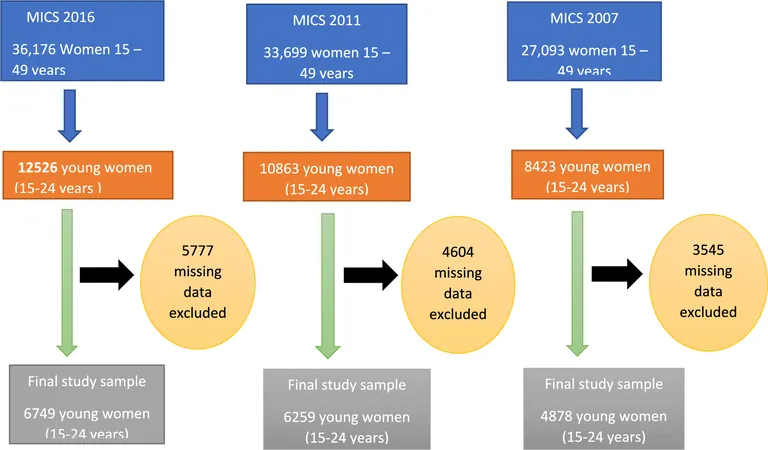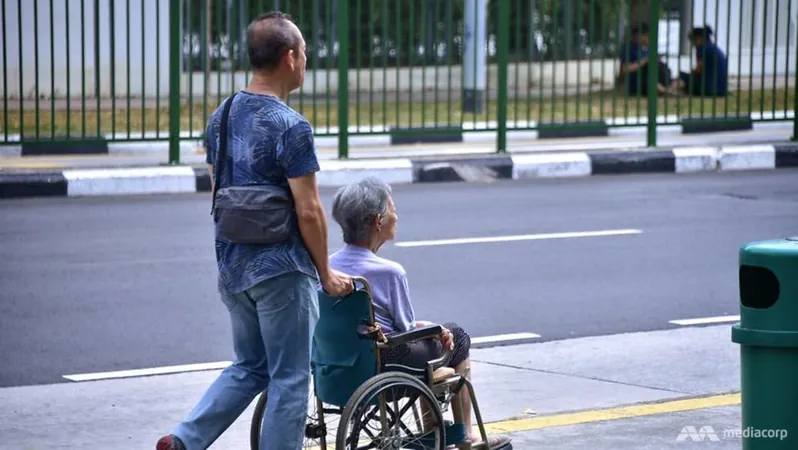
Unveiling the Hidden Struggles: Adolescent Women and HIV Testing in Nigeria
2025-06-11
Author: John Tan
The Alarming Reality of HIV in Nigeria
HIV remains a formidable global health crisis, having claimed over 36 million lives, particularly in sub-Saharan Africa. Nigeria stands out as one of the most affected nations, with young women aged 15-24 facing the brunt of this epidemic. This demographic is not only at higher risk of contracting HIV but also grapples with challenges that hinder their access to knowledge, prevention, and testing.
What the Research Revealed
In a comprehensive study drawing insights from various surveys conducted over nearly a decade, researchers pinpointed trends in HIV knowledge, behavior, and testing among adolescent women in Nigeria. Data from the Nigeria Multiple Indicator Cluster Surveys (MICS) spanning 2007, 2011, and 2016 highlighted significant associations between education, urban residency, and increased HIV testing rates.
Education: A Catalyst for Change
The findings reveal a clear link between educational attainment and HIV testing. Young women with at least a secondary education were far more likely to undergo testing compared to those with primary education or less. Strikingly, those who exhibited good preventive behaviors — like consistent condom use — were about 1.7 to 1.8 times more likely to get tested, underscoring the impact of education and awareness in combating this public health crisis.
Rural vs. Urban Disparities
The research also unearthed a troubling divide between urban and rural areas. Young women dwelling in rural regions reported lower testing rates, revealing the urgent need for targeted interventions, such as mobile testing services, to bridge this gap.
Behavioral Risks and Misconceptions
Despite progress, many young women still engaged in risky sexual behaviors, increasing their vulnerability. Factors like transactional sex, low perception of personal risk, and inconsistent condom usage are alarming contributors to the continued spread of HIV, further complicated by widespread stigma surrounding HIV testing.
A Call to Action: Empowering Young Women
To combat these challenges effectively, it's imperative to integrate comprehensive HIV education into school curriculums and expand access to healthcare services, especially for young women in rural areas. Innovative strategies must be explored to reach adolescents, ensuring they are informed and empowered to make healthier choices.
Conclusion: Strategies for the Future
While the upward trend in HIV testing rates indicates progress, a significant number of young women remain untested, hindering efforts to control the epidemic. To truly make a difference, Nigeria must invest in education, dismantle stigma, and enhance healthcare access to give its young women the tools they need to protect themselves against HIV. As efforts continue, this demographic's empowerment can pave the way toward a healthier future for all.






 Brasil (PT)
Brasil (PT)
 Canada (EN)
Canada (EN)
 Chile (ES)
Chile (ES)
 Česko (CS)
Česko (CS)
 대한민국 (KO)
대한민국 (KO)
 España (ES)
España (ES)
 France (FR)
France (FR)
 Hong Kong (EN)
Hong Kong (EN)
 Italia (IT)
Italia (IT)
 日本 (JA)
日本 (JA)
 Magyarország (HU)
Magyarország (HU)
 Norge (NO)
Norge (NO)
 Polska (PL)
Polska (PL)
 Schweiz (DE)
Schweiz (DE)
 Singapore (EN)
Singapore (EN)
 Sverige (SV)
Sverige (SV)
 Suomi (FI)
Suomi (FI)
 Türkiye (TR)
Türkiye (TR)
 الإمارات العربية المتحدة (AR)
الإمارات العربية المتحدة (AR)